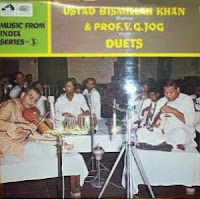An old funny article on the Third Ear Band by great journalist & editor Chris Welch, published in "Melody Maker" on July 12th, 1969, investigates on the first steps of the group...
"In the day of The Big Bash, when groups sent their audiences mad with noise, there seemed a strong likelihood of complaints from races dwelling on neighbouring galaxies, about the racket we Earthmen were creating.
"Hello, this is the planet Blotto here, just north of Andromeda", crackles the message in the ears of a stratled radio telescope operator.
"I say, can you do something about the noise old chap? Much as we enjoy the Who and Pink Floyd out here on dull Blotto (three suns, high methane content, several two stars hotels), the racket tends to upset our highly delicate nervous systems. Can you hear me? No - I can't hear you either!".
PEACE
But now groups are cooling down all over the globe. Cream became Blind Faith and took a step down from sheer volume. John Mayall dispensed with drums in search of peace.
The ultimate are the Third Ear Band who proudly claim they can actually lull their audience into a trance if not a deep, refreshing sleep.
Merely cocking one ear to the sound of Glen Sweeney, Richard Coff, Paul Minns and Mel Davies, however, is enough to convince one of human intelligence at work.
Their music is demanding, intriguing and unique. A non-electric band, they feature Richard on violin, Paul on oboe, Mel on cello and Glen on tabla and hand drums. They have only been operating a few months and are quickly gaining recognition for blanding of Eastern and European influences.
A recent highligt for them was an appearance on the Blind Faith free concert.
They are managed by the old firm of Blackhill Enterprises, and have their first album "Alchemy" released on EMI's "okay" label, Harvest.
Although they are (gulp) Underground, they are also cheerfully (burp) pop.
Ex-bebop and free drummer, Glen Sweeney told me this week that his current favourite sound is "Dizzy" by Tommy Roe.
"I got some great rhythms off that one. It was groovy", said Glen sounding mildly surprised, as we drank taste-proof coffee in a plastic egg palace.
I complimented Mr Sweeney on their Hyde Park performance. "Yes, we sound good in the open air. That's how it started really. Me and Dave Tomlin, a jazz tenor player, used to play in the park as the Sun Trolley.
"We got busted by an incredible amount of park fuzz. This was before the official free concerts started, in the summer before last. Somebody recorded a lunatic conversation between us and the fuzz on tape.
"I really don't know what music we were playing then. It was all under the influence of the big turn on of UFO. I used to play a full kit of drums until they got stolen. Then I got hold of some hand drums. There are always a lot of drums hanging around Notting Hill Gate.
"We started the Third Ear Band proper at the end of last summer. Before that it was half electric. But the electric lead guitarist wasn't too successful, and when he left, we found we had an all acoustic group.
WEIRD
"The Blackhill signed us up for what reason I don't know. It was on the strenght of one church all audition.
"We'd rather people called us a pop group. We do ragas, that aren't really ragas at all, and unless we get a turned on promoter, we get into some weird scenes. At Norwich once, when the promoter saw the audience sitting down and closing their eyes to our music, he accused us of putting them to sleep! Complete paranoia. So I imagine we wouldn't do too well on the Pop Proms.
"It's just a question of advertising. We've stayed very much Underground - no photos - and I think this was necessary so people wouldn't put us in a bag. We'd rather the just came up and heard us without ANY preconceived ideas. I suppose it is a bit shattering to see violins and cellos.
IMAGES
"I'd say ninety per cent of our music is improvisation. It's not really Indian music, although we use a drone instead of the usual bass line riffs. The music draws from everywhere.
"I think our appeal is that audiences can draw their own thing from us. We make no announcements and none of the numbers have titles. People in colleges we play come up after and say they can get fantastic images in their mind when they listen. We can offer a complete dream. The old Celtic bards used to have the same ability".
"At Hyde Park we had a beautiful audience, but if you get a bad audience there is not much you can do about it.
TEB (L-R: Coff, Sweeney, Minns,Cartland) at the Camden Fringe Festival on May, 1969 (©REPFOTO).
"We once had eight drunk rugby players yelling dirty songs at us. We played quieter and quieter. In the end they seemed ashamed and shut up. But I still don't think they dug the music!".
©1969 Chris Welch-"Melody Maker"
no©2010 Luca Ferrari































































































